Warrior I Pose (Virabhadrasana I) Meaning, Benefits and Instruction
By yogavini
January 10, 2024 • Fact checked by Dumb Little Man
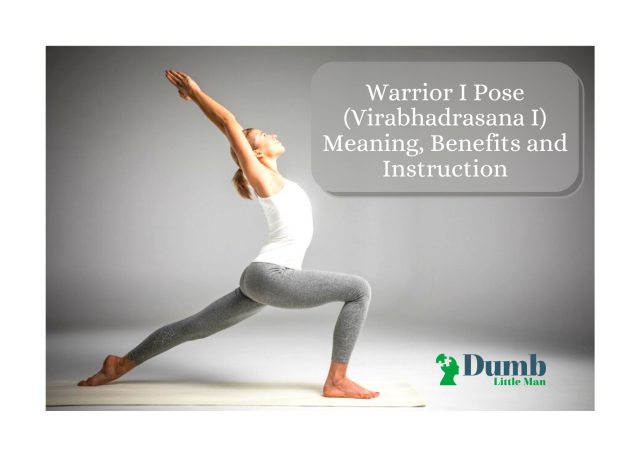
The warrior 1 pose is a hip opening standing pose that provides strength and flexibility to the practitioner.
The pose strengthens almost every muscle in the body. It focuses on the upper arms and the shoulders, the upper back, builds core endurance, improves hamstrings, glutes, groins, calf muscles, and even tones the feet and the ankles.
Warrior pose 1 helps cure many physical and mental ailments. It strengthens the spine, works urinary problems or acidity and gas formation and strengthens thigh muscles and sexual organs. It also calms the mind and improves the concentration span of a person. In all, the pose significantly improves the quality of life and promotes a healthy mind and body.
Origin and Meaning of Warrior I Pose
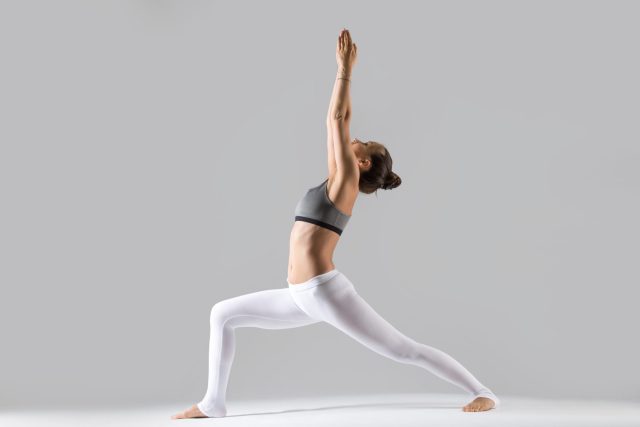
The original name of the warrior 1 pose is Virabhadrasana I, a Sanskrit word. It is a reference to a brave warrior named Virabhadra in Hindu mythology. The word “vira” means hero and “Bhadra” means friend, thus its name, the Warrior pose.
Warrior 1 pose is one of the three forward-standing poses named after lord shiva’s incarnation Virabhadra. The story of the pose goes way back to the ancient Hindu mythology days. It is said that Virabhadra was an incarnation of lord shiva, and was incarnated to avenge the death of shiva’s wife, Sati.
Out of the three poses (Warrior 1 pose, Warrior 2 pose, and Warrior 3 pose), warrior 1 is the easiest to perform.
Warrior 1 Pose – High Range and Reverse
People often get confused between the warrior 1 pose, its high range and the reverse warrior 1 pose.
High Range
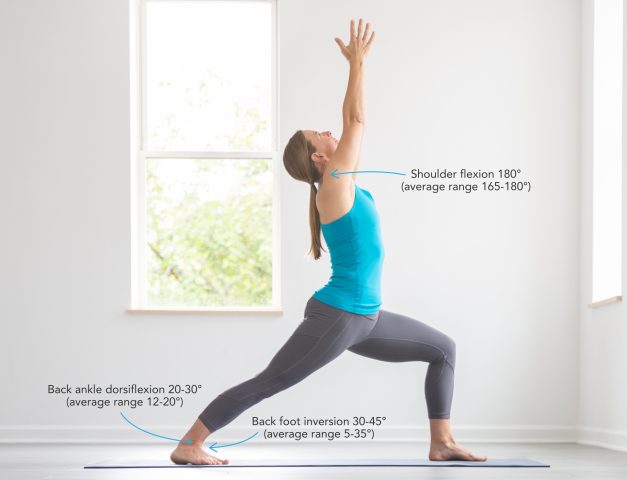
In the High range, the heel of the back leg is lifted from the floor, the foot forming an almost 90-degree angle with the floor. The upper body is straight, and the gaze is forward, with no bend in the neck. However, in the Warrior 1 pose, the back foot is on the floor and is at a 45-degree angle with the ankle. While the body is straight even here, the neck is bent back. The high range is an easier variation of the warrior 1 pose.
Reverse warrior 1
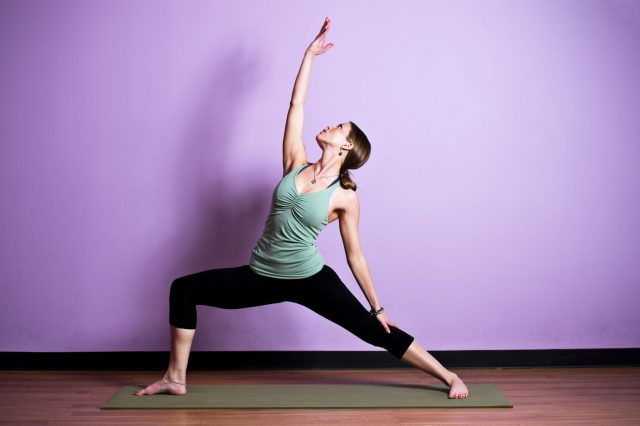
The reverse warrior is closer to the Warrior 2 pose. In the pose, the body faces at an angle 90 degrees with the front (say right) inner thigh and the left hand touches the left knee. In contrast to this, in the warrior 1 pose, the body faces in the direction of the bent knee and both the hands are stretched towards the sky.
Variations
Variation 1
Instead of aligning your heels, you can keep them wide apart. This helps in squaring the hips better while also maintaining the pose.
Variation 2
You can bend your head back and bring your palms closer to touch each other.
Variation 3
You can challenge yourself by holding the pose longer than your usual.
Precautions and Contradictions
Do not perform the warrior 1 pose if you suffer from the following:
- High Blood Pressure
- Rheumatoid arthritis
- Spine related conditions
- Osteoporosis
- Diarrhea
- Hip or leg injury
- Or if you are pregnant
You should also avoid looking at your fingers, while in the warrior 1 position if you have discomfort in your neck region. Finally, do not perform the pose if it is beyond your physical potential.
Preparatory Poses
The warrior 1 pose has many preparatory poses, some of them can be are:
Downward dog pose
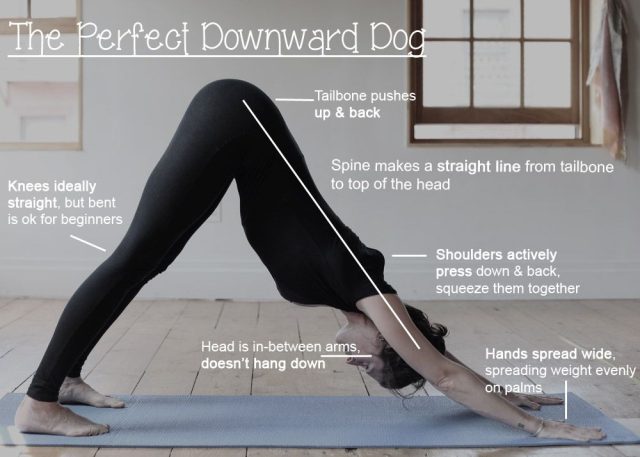
Tree pose

Revolved triangle pose
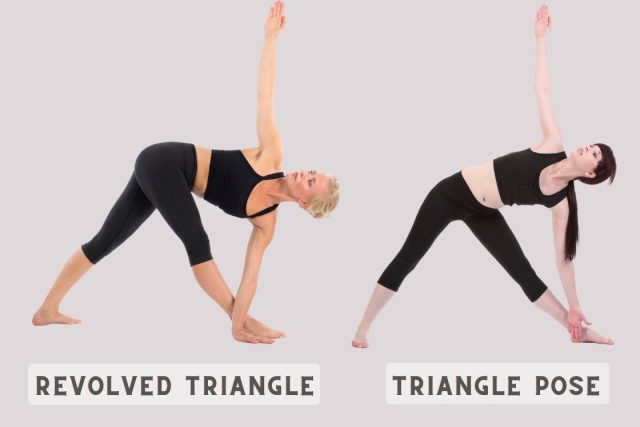
Extended side angle pose
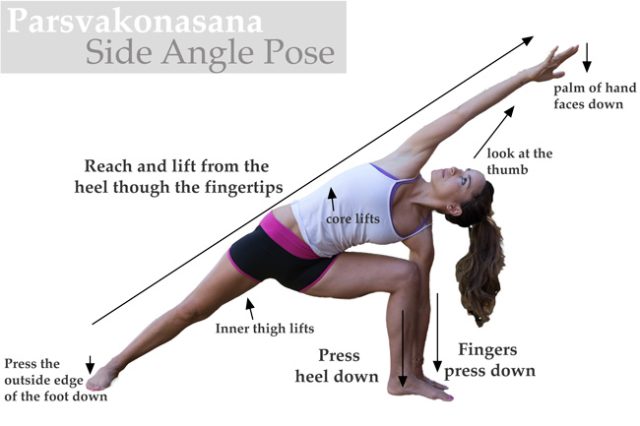
Similar Posts
- High lunge
- Low lunge
- Revolved side angle pose
The Warrior 1 pose is a great beginner-level yoga pose to keep you fresh and healthy. It not just provides physical but also mental balance and makes one confident and more aware of himself. Regular practice of the warrior 1 pose can significantly improve your quality of life.
Benefits of the Warrior 1 Pose
Improves blood circulation
The warrior 1 pose is a chest opener pose. It opens the chest and provides more space for the lunges and the heart. More space for the lungs ensures better air volume inhalation. Thus, warrior 1 poses improve breathing, respiration and helps with better blood circulation.
Relieves back pain
The warrior 1 pose stretches the spine and relaxes it. The pose is beneficial for people who have sedentary jobs or suffer from sciatica. It also provides relief in the shoulder region as a result of stretching them upwards.
Improves balance and coordination
The warrior 1 pose involves the movement of all the limbs of the body. While your hands are stretched over your head, one leg is stretched backward and the other supports a major part of your weight. Such a complex involvement of the organs calls for enhanced coordination and balance. With time, the person gets accustomed to being more organized.
Strengthens the body
The warrior 1 pose involves almost all the muscles in the body. It involves the thigh muscles, the shin, the entire upper back and the hands.
The National Bureau of Biometric Information in research said that balancing yoga poses have been seen to strengthen the thigh muscles like the hamstrings and quadriceps.
Improves concentration
Since the warrior 1 pose is a compound balancing pose, you have to pay attention to the positioning of your feet and arms at all times. Awareness of yourself – at the moment – promotes mental stability and concentration.
An electromyographic analysis of selected asana in experienced yogic practitioners, that included Warrior 1 pose, suggested that yoga improves health and fitness through the integration of the mind, body, and soul.
Instills confidence
The position of the warrior 1 pose is so well designed that it instantly instilled confidence in the mind of the practitioner. A straight back, stretched out arms and legs, open chest, healthy breathing, and front gaze, all promote self-belief and make you feel that you have a strong grounding.
Common Mistakes
Extending the knees beyond your toes
While performing the warrior 1 pose, do not extend your feet beyond your toes. Doing so puts pressure on the front knee and can also affect your balance.
Not stretching your upper body
In the attempt to position the legs properly in warrior 1, people often forget to pay attention to their upper body. They forget to straighten their back and stretch their arms.
Trying to arch your lower back
Usually, first-time performers of the warrior 1 pose are not able to balance themselves and end up arching their lower back on their hips. This can cause discomfort in the lower back region. If this is happening with you, try straightening your tailbone.
Keeping feet too far apart
As a beginner, you should try from the base. In the attempt of mastering the warrior 1 pose, people try to keep their feet as far apart as possible. You must not do that. This causes tension in the torso and the hips are unable to square to the front. You should place your feet in such a way that your entire upper body faces the front.
Tips to Be Better
Do not try arching back
You must not try to arch your back as soon as you are in the position. Once you have adjusted your legs, straighten your back and then extend your hands gradually over your head. Once you are here, bend your shoulders and arms slightly backward, only if possible.
Align your heels
Place your heels in such a way that both your heels are aligned.
Use a wall to support your back foot
As a beginner for the warrior 1 pose, try taking the support of a wall for your rear foot if you do not feel balanced.

